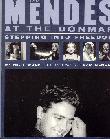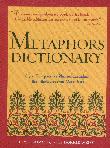SEARCH CurtainUp
REVIEWS
FEATURES
NEWS (Etcetera)
ADDRESS BOOKS
Broadway
Off-Broadway
BOOKS and CDs
OTHER PLACES
Berkshires
London
Los Angeles
Philadelphia
Elsewhere
QUOTES
On TKTS
LETTERS TO EDITOR
FILM
LINKS
MISCELLANEOUS
Free Updates
Masthead
NYC Weather
 London Review
London Review
Got To Be Happy
by Liza Zapol
|
You want to do it on a table? Like we used to when we first met? Be like old times' sake. You want to? I mean it's your bum not mine . ---Richard Why's it got to be my bum?--Caroline Heath n' safety go crazy they saw that, not putting me bare bum on it. ---Richard |
Got To Be Happy is set in a restaurant kitchen, and the audience is witness to the interactions of four lonely people in a small Northern town café. The kitchen (masterfully designed by Lisa Lillywhite) is complete with red tile floor, steel countertops, a stocked storeroom, and crumbs strewn about. In such a tight working space, the truth inevitably spills out about how each character feels about every one else. Loneliness, love, and dreams are laid out bare like butter slathered on a roll.
Wunderkind Simon Burt, Bush Theatre's twenty-eight year old Writer-in Residence, penned this mature-themed play. Well, mature in that the play respectfully and realistically portrays the solitary Charley (Paul Copley), a sixty-year old head cook. Charley is shaken from his closed life by a new addition to the staff, his former sweetheart Connie (Polly Hemingway), and the impending departure of his surrogate daughter, head waitress Caroline (Lisa Ellis).
The dialogue, rife with slang and jargon, is snappy and funny, if a bit difficult to understand by my (untrained American) ear. Concentration is required to understand the dialogue: even so, I had the unfortunate sense that several jokes passed by without my understanding them at all. The strong actors and their ease with the language communicate most of the necessary information.
Director Owen Lewis makes the most of the scenes between Charley and Connie, and they are the strong points of the play. Copley and Hemingway are masters of timing, and each moment is tinged with a sense of nostalgia and a sense of their painful history. Charley rarely looks at Connie (or any one else for that matter) in the eyes. Despite the fact that avoided eye contact seems to be a frequently overused signifier for older male actors of impotence and disconnection, Paul Copley uses the tool well. When he does look at Connie, it is clear that she has momentarily broken through his strong defenses.
Unfortunately, the plot seems to revolve more around the 21-year old Caroline, and her boyfriend Richard, the restaurant manager. Their six year relationship is on the rocks as Caroline is headed away to university, and in the eyes of her immature boyfriend (six years her elder) she isn't fifteen anymore. The dialogue is clever between the two, much like writing for television, but there is little to care about in their stale relationship. Lisa Ellis, as Caroline, has good comic timing, and is a very comfortable performer-but she is a bit too strong and wise to be an insecure twenty-one year old. Martin Hancock (Richard) looks more her peer than her elder, and seemed to be trying to play for laughs, without a cohesive character.
Ultimately, the connection between Caroline and Charlie is made possible by their mutual understanding and passionate connection to a piece of music: Dido's lament from Dido and Aeneas. The music poignantly makes them realize the truth about their love for the other characters. The music in the darkness of scene changes and within the scenes engulf the plot. Simon Burt and Owen Lewis seem to use it as a replacement for the missing passion between the characters.
Got To Be Happy is an impressive play for a young playwright of whom we will certainly see more. It is , inhabited by compelling characters in an ordinary world. It is certainly a worthwhile visit to the Bush Theatre to watch Charley and Connie and listen to the fast and fresh dialogue. Just overlook the crumbs on the table, and you will enjoy the tasty treat served up at the quaint cafe,
|
GOT TO BE HAPPY by Simon Burt Directed by Owen Lewis Set and Costume Designer: Lisa Lillywhite Lighting Designer: Tanya Burns Starring: Paul Copley, Lisa Ellis, Martin Hancock, Polly Hemingway Running time: 1 hour 45 minutes, includes 15 minute intermission. The Bush Theatre, Shepherds Bush Green, London, W12 8QD 020 7610 4224 From 2 April 2003; opening 4 April 2003 thru 3 May 2003 8pm, Mon-Sat: £12.50 Mon-Thur (£8.25 conc.) and £13.50 Fri-Sat (£8.75 conc.) Reviewed April 4 2003 by Liza Zapol |

Mendes at the Donmar
Our Review

Peter Ackroyd's History of London: The Biography

London Sketchbook

Somewhere For Me, a Biography of Richard Rodgers

At This Theater

Ridiculous!The Theatrical Life & Times of Charles Ludlam

The New York Times Book of Broadway: On the Aisle for the Unforgettable Plays of the Last Century

6, 500 Comparative Phrases including 800 Shakespearean Metaphors by CurtainUp's editor.
Click image to buy.
Go here for details and larger image.



